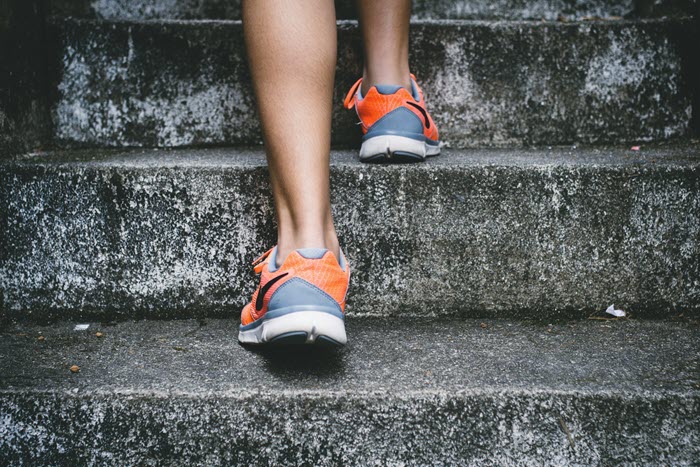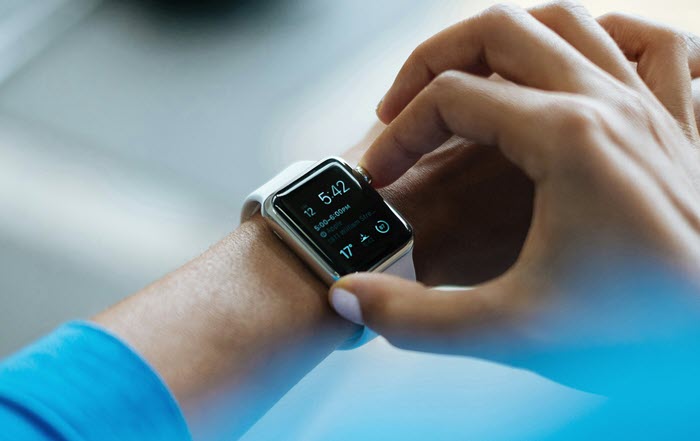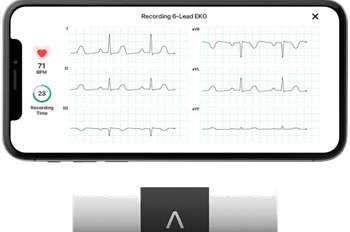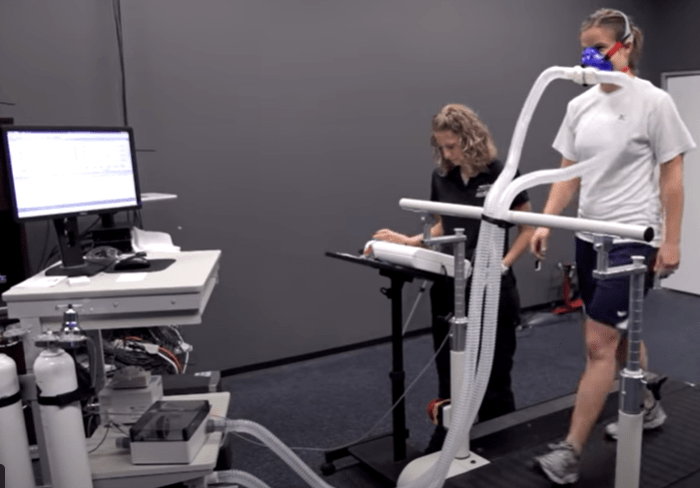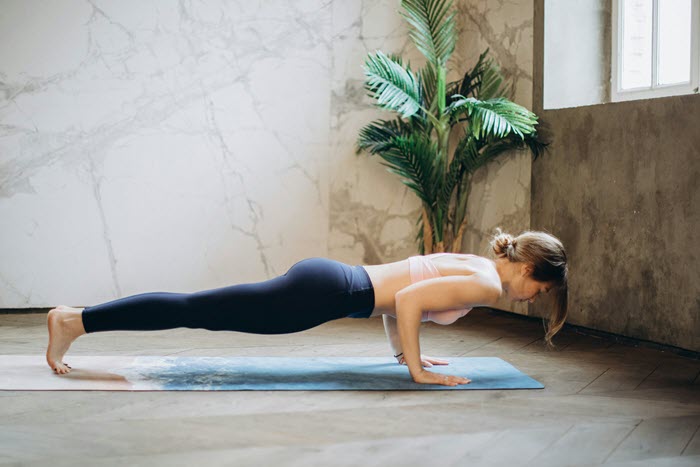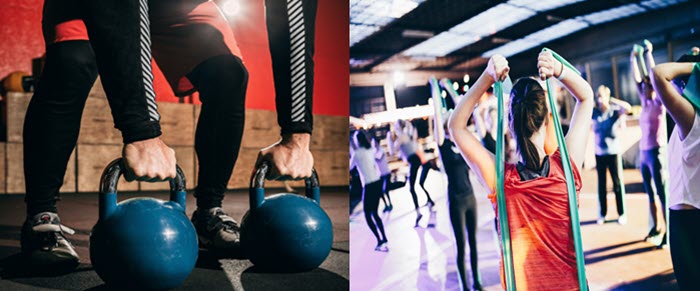7 Points Of High Intensity Interval Training High intensity interval training, also known as HIIT, is a popular exercise method that involves alternating short bursts of intense exercise with periods of rest or lower intensity activity. This type of workout has been shown to be highly effective for burning calories, improving cardiovascular fitness, and building endurance. Incorporating HIIT into your fitness routine can provide a quick and efficient way to achieve your fitness goals. 7 Points Of High Intensity Interval Training (HIIT)
Contents
- 1 Brief Overview of HIIT
- 2 Popularity and Benefits of HIIT
- 3 I. The Science Behind HIIT
- 4 II. Getting Started with HIIT
- 5 Assessing Your Fitness Level
- 6 Consulting with a Healthcare Professional
- 7 III. Basic HIIT Workouts for Beginners
- 8 IV. Advanced HIIT Techniques
- 9 V. Nutrition and Recovery
- 10 VI. Common Mistakes to Avoid
- 11 VII. High Intensity Interval Training Success Stories
- 12 Ready to start your own journey?
Brief Overview of HIIT
High Intensity Interval Training, or HIIT, is the fitness trend that’s taken the world by storm, and for good reason. Picture this: a workout that alternates between intense bursts of activity and fixed periods of less-intense activity or even complete rest.
Sounds simple, right? But don’t let the simplicity fool you. These rapid-fire intervals can push your body to its limits in a way that’s both exhilarating and incredibly effective.
So, what makes HIIT different from your regular, steady-state cardio? It’s all about the intensity. During those high-energy bursts, you give it your all—think sprinting, jumping, or lifting weights as hard and fast as you can.
Then, you take it down a notch to catch your breath, letting your body recover just enough before you ramp up the intensity again. This cycle repeats for the duration of your workout, which can be as short as 20 minutes but packs the punch of a much longer session.
Popularity and Benefits of HIIT
Why has HIIT skyrocketed in popularity? For starters, it’s a massive time-saver. In our fast-paced world, finding an hour to spend at the gym can feel impossible. But with this type of workout, you can get an effective workout in half the time.
Moreover, HIIT is versatile and adaptable. Whether you’re a seasoned athlete or a fitness newbie, you can tailor the intensity and duration of the intervals to match your fitness level. Bodyweight exercises like burpees, mountain climbers, and jumping jacks can deliver a killer workout right in your living room, no fancy equipment needed.
But the benefits of high intensity interval training go beyond just burning calories and saving time. It also improves cardiovascular health, increases metabolic rate, and builds muscle. The varied intensity levels engage different muscle fibers, promoting muscle growth and endurance. Plus, the dynamic nature of high intensity interval training keeps things interesting, making it less likely that you’ll get bored and give up on your fitness goals.
I. The Science Behind HIIT
How HIIT Works
The beauty of High Intensity Interval Training lies in its simplicity and its profound impact on the body. At its core, HIIT involves short bursts of intense exercise followed by brief recovery periods.
This pattern of work and rest is designed to push your heart rate into the anaerobic zone—where you’re working so hard that your body can’t supply enough oxygen to your muscles. This forces your body to tap into its energy reserves, leading to a higher calorie burn both during and after your workout.
During the intervals, you might sprint, jump, or lift weights at maximum effort. These intervals are typically anywhere from 20 to 90 seconds long. Following this, a short rest period allows your heart rate to drop slightly, providing just enough recovery to prepare for the next intense burst.
This intense effort during the workout creates what’s known as the afterburn effect, or EPOC (excess post-exercise oxygen consumption). Your body continues to burn calories at an elevated rate even after you’ve finished exercising as it works to restore itself to a resting state. This means you get more bang for your buck—burning calories long after you’ve left the gym.
Impact on Cardiovascular and Metabolic Health
HIIT doesn’t just help you shed pounds; it’s also a powerhouse for your cardiovascular and metabolic health. By regularly pushing your heart rate into the anaerobic zone, you improve your heart’s efficiency and capacity.
Efficiency: This refers to how well your heart performs its job of pumping blood. By improving efficiency, your heart can pump more blood with each beat, delivering oxygen and nutrients more effectively to your muscles and organs. This can result in better overall cardiovascular health and improved physical performance.
Capacity: This refers to the maximum amount of work your heart can do, typically measured by factors like maximum oxygen consumption (VO2 max). By increasing your heart’s capacity, you enhance its ability to handle physical activity, endure longer periods of exercise, and recover more quickly. This can lead to increased stamina, reduced risk of heart disease, and improved quality of life.
In addition to these benefits, this type of exercise has been shown to improve insulin sensitivity, which helps regulate blood sugar levels and reduce the risk of type 2 diabetes. The combination of intense exercise and recovery periods creates a metabolic demand that promotes fat oxidation and glucose metabolism, making high intensity interval training a powerful tool for managing and preventing metabolic disorders.
II. Getting Started with HIIT
Assessing Your Fitness Level
Before you jump into the world of high intensity interval training, it’s crucial to understand your starting point. Knowing your fitness level can help you tailor your workouts to avoid injury and ensure you’re progressing at a safe and effective pace. Are you a seasoned athlete or a complete beginner? This self-assessment will guide your high intensity interval training journey.
Start by gauging your cardiovascular endurance, strength, and flexibility. Simple tests like a timed mile run, push-up and squat counts, and a basic sit-and-reach can give you a baseline.
- MILE RUN TEST:
- Under 8 minutes: Excellent cardiovascular fitness and endurance.
- 8-9 minutes: Very good cardiovascular fitness and endurance.
- 9-10 minutes: Good cardiovascular fitness and endurance.
- 10-11 minutes: Above average cardiovascular fitness and endurance.
- 11-12 minutes: Average cardiovascular fitness and endurance.
- 12-14 minutes: Below average cardiovascular fitness and endurance.
- Over 14 minutes: Poor cardiovascular fitness and endurance.
- Comparison to Standards:
- Compare the individual’s time to standard norms for their age group and gender. Many fitness organizations provide charts or calculators for this purpose.
- For example, if the individual runs a mile in 9 minutes and is a 30-year-old male, compare their time to average times for 30-year-old males to assess where they stand relative to their peers.
Push-Up Test:
- One-Minute Push-Up Test:
- Procedure: The participant performs as many push-ups as possible in one minute while maintaining proper form (hands shoulder-width apart, body straight from head to heels, chest touching the ground at the bottom of each repetition).
- Results:
- Fewer than 10 push-ups: Below average
- 10-19 push-ups: Average
- 20-29 push-ups: Above average
- 30+ push-ups: Excellent
- Max Reps Test:
- Procedure: The participant performs as many push-ups as possible until failure while maintaining proper form.
- Results:
- Fewer than 5 push-ups: Poor
- 5-9 push-ups: Fair
- 10-19 push-ups: Good
- 20-29 push-ups: Very good
- 30+ push-ups: Excellent
Interpretation: Push-up tests primarily assess upper body and core strength and muscular endurance. Higher numbers of push-ups indicate greater upper body and core strength, as well as endurance. Lower numbers may suggest a need for improvement in these areas. However, it’s essential to consider factors such as age, gender, and fitness level when interpreting the results.
Squat Test:
- Bodyweight Squat Test:
- Procedure: The participant performs as many bodyweight squats as possible in one minute while maintaining proper form (feet shoulder-width apart, knees tracking over toes, hips back and down, chest up).
- Results:
- Fewer than 10 squats: Below average
- 10-19 squats: Average
- 20-29 squats: Above average
- 30+ squats: Excellent
- Max Reps Squat Test:
- Procedure: The participant performs as many squats as possible until failure while maintaining proper form.
- Results:
- Fewer than 5 squats: Poor
- 5-9 squats: Fair
- 10-19 squats: Good
- 20-29 squats: Very good
- 30+ squats: Excellent
Understanding where you stand allows you to set realistic goals and track your progress. Remember, high intensity interval training is intense by nature, so it’s important to ease into it if you’re new to these types of workouts.
Consulting with a Healthcare Professional
While HIIT is beneficial for many, it’s not a one-size-fits-all solution. Consulting with a healthcare professional before starting any new exercise regimen is always a wise move, especially if you have any pre-existing conditions or concerns.
Your healthcare provider can perform a more thorough fitness assessment and offer personalized advice. They can identify any potential risks and recommend modifications to suit your individual needs. For instance, if you have joint issues, they might suggest low-impact alternatives to traditional high intensity interval training exercises.
III. Basic HIIT Workouts for Beginners
Examples of Simple HIIT Routines
Ready to get started with high intensity interval training? Here are a few beginner-friendly routines that will kickstart your journey.
The Classic 20-10 Tabata:
This involves 20 seconds of all-out effort followed by 10 seconds of rest, repeated for 4 minutes. Try exercises like high knees, jumping jacks, squats, and push-ups.
Bodyweight Circuit:
Perform each exercise for 30 seconds, followed by 15 seconds of rest. Cycle through moves like burpees, mountain climbers, lunges, and plank jacks for 3 rounds.
Sprint Intervals:
Find a stretch of space where you can sprint for 30 seconds, then walk for 1 minute. Repeat this cycle for 20 minutes.
Cycling:
You could do sprint intervals on a stationary bike or outdoors on a road bike. Here’s how you can adapt the routine:
Warm-up: Begin with a 5-10 minute easy-paced ride to warm up your muscles and get your heart rate up.
Sprint Interval: Pedal as hard and fast as you can for 30 seconds, aiming for high resistance or increasing your speed significantly if outdoors.
Active Recovery: After the sprint, pedal at a slow pace or reduce resistance for 1 minute to recover.
Repeat: Repeat the sprint interval followed by active recovery for a total of 20 minutes.
Cool Down: Finish with a 5-10 minute easy-paced ride to cool down your muscles and bring your heart rate back to normal.
Swimming:
You can adapt the routine to pool lengths:
Warm-up: Swim easy-paced laps for 5-10 minutes to warm up your muscles and get comfortable in the water.
Sprint Interval: Swim as fast as you can for 30 seconds, covering as much distance as possible in the pool.
Active Recovery: After the sprint, swim slowly or float for 1 minute to catch your breath and recover.
Repeat: Repeat the sprint interval followed by active recovery for a total of 20 minutes, alternating between fast and slow laps.
Cool Down: Finish with 5-10 minutes of easy-paced swimming to cool down your muscles and relax.
Remember to adjust the intensity and duration of the intervals based on your fitness level and goals. Always listen to your body and consult with a fitness professional if you’re new to exercise or have any health concerns.
Tips for Maintaining Proper Form and Avoiding Injury
Warm Up:
Always start with a 5-10 minute warm-up to get your muscles ready. This could be a light jog, dynamic stretches, or jumping jacks.
Focus on Technique:
Quality over quantity. Make sure you’re performing each exercise correctly, even if it means slowing down. For instance, during squats, keep your knees behind your toes and your back straight.
Listen to Your Body:
Pay attention to how your body feels. If something hurts, stop. There’s a difference between discomfort from effort and pain from injury.
Cool Down:
Finish with a cool-down period to help your body recover. Stretching and deep breathing can help reduce muscle soreness and improve flexibility.
Stay Hydrated:
Drink plenty of water before, during, and after your workout. Staying hydrated helps maintain performance and prevent cramps.
By following these tips, you’ll not only enhance your performance but also reduce the risk of injury, ensuring a long and healthy HIIT journey.
IV. Advanced HIIT Techniques
Using Weights, Kettlebells, and Resistance Bands
Ready to take your HIIT workouts to the next level? Adding weights, kettlebells, and resistance bands can amplify your efforts and introduce new challenges. Incorporating equipment not only increases the intensity of your workouts but also targets different muscle groups, enhancing overall strength and endurance.
Kettlebell Swings:
Perform double kettlebell swings for added resistance. Incorporate a one-arm swing, alternating arms with each repetition. Increase the speed of the swings while maintaining proper form for an intense cardio challenge.
Dumbbell Thrusters:
Implement a jump at the top of the thruster movement to increase explosive power. Perform thrusters with a single dumbbell, alternating arms with each repetition. Add a squat jump before each thruster repetition to elevate heart rate and engage more muscles.
Weighted Lunges:
Incorporate walking lunges with a heavier weight to challenge stability and strength. Add a plyometric jump between each lunge repetition for explosive power and increased calorie burn. See examples here:
Resistance Band Workouts:
Resistance bands are fantastic for adding an extra challenge without the bulk of heavy weights. Use them for exercises like banded squats, resistance band rows, or glute bridges. They’re perfect for targeting smaller muscle groups and improving stability.
Combining Equipment:
Mix and match equipment in a single session. For example, start with bodyweight exercises, then move to weighted intervals, and finish with resistance band work. This variety keeps your body guessing and maximizes calorie burn.
Benefits of Adding Equipment to Your Routine
Increased Muscle Activation:
Equipment like weights and resistance bands recruit more muscle fibers, leading to greater muscle growth and strength gains.
Enhanced Calorie Burn:
The added resistance means your body has to work harder, boosting the number of calories burned both during and after your workout.
Improved Functional Fitness:
Using equipment improves your functional strength, making everyday activities easier and reducing the risk of injuries.
Customizing HIIT for Different Goals
High intensity interval training is incredibly versatile and can be customized to meet various fitness goals. Whether you’re aiming for weight loss, muscle building, or endurance training, HIIT can be tailored to suit your needs.
High Intensity Interval Training for Weight Loss:
Focus on short, high-intensity intervals with minimal rest. Incorporate full-body movements like burpees, jumping jacks, and mountain climbers to maximize calorie burn. Combine these with a balanced diet for optimal results.
HIIT for Muscle Building:
Use heavier weights and longer rest periods. Opt for compound movements such as deadlifts, squats, and bench presses. This approach emphasizes muscle hypertrophy and strength.
HIIT for Endurance Training:
Extend the duration of your intervals and reduce the intensity slightly. Exercises like jogging, cycling, or swimming can be used in longer intervals to build cardiovascular endurance. Gradually increase the length of your workouts to improve stamina.
By customizing your HIIT workouts to align with your specific goals, you can achieve more targeted results and keep your fitness journey exciting and effective. Next, we’ll explore essential nutrition and recovery strategies to support your efforts and ensure you’re getting the most out of your workouts.
V. Nutrition and Recovery
Importance of a Balanced Diet
Fueling your body properly is crucial for getting the most out of your workouts. A balanced diet provides the energy and nutrients needed to perform at your best and recover effectively.
Ensure your diet includes a mix of carbohydrates, proteins, and healthy fats. Carbs are your body’s primary energy source, especially during high intensity interval training activities. Proteins help repair and build muscle, while fats support overall health and energy levels.
Pre and Post-Workout Nutrition Tips
What you eat before and after your workout can significantly impact your performance and recovery.
Pre-Workout:
Aim to eat a small meal or snack that includes carbs and a bit of protein about 30 minutes to an hour before your workout. Think of a banana with a spoonful of peanut butter, or a slice of whole-grain toast with avocado. This fuels your muscles and helps sustain your energy throughout the session.
Post-Workout:
After your workout, focus on replenishing glycogen stores and aiding muscle recovery. A combination of protein and carbs within 30 minutes post-exercise is ideal. A smoothie with protein powder, berries, and spinach, or a chicken and quinoa bowl, can do the trick. Hydration is equally important—drink plenty of water to replace fluids lost through sweat.
The Importance of Rest and Recovery
Equally important as the workouts themselves, rest and recovery are vital for muscle repair, growth, and overall performance improvement. Overtraining without sufficient recovery can lead to fatigue, injuries, and burnout. Here’s how to optimize your recovery
Stretching:
Incorporate stretching into your cool-down routine. It helps maintain flexibility, reduces muscle tension, and promotes circulation. Focus on major muscle groups and hold each stretch for at least 15-30 seconds.
Hydration:
Staying hydrated is crucial for recovery. Water helps flush out toxins, transport nutrients, and maintain muscle function. Aim to drink water consistently throughout the day, not just during workouts.
Sleep:
Quality sleep is where the magic happens. During sleep, your body repairs tissues, produces growth hormones, and consolidates muscle memory. Aim for 7-9 hours of sleep per night to support your fitness goals.
By paying attention to your nutrition and recovery, you’ll enhance your performance, reduce the risk of injuries, and ensure sustainable progress on your HIIT journey. Up next, we’ll tackle common mistakes to avoid and share real-life success stories to keep you motivated and on track.
VI. Common Mistakes to Avoid
Risks Associated with Too Much High Intensity Interval Training Exercises
High intensity interval training is a powerful tool, but like any tool, it must be used correctly. Overdoing high-intensity exercise can lead to overtraining, which can have detrimental effects on your body and mind.
Symptoms of overtraining include chronic fatigue, decreased performance, and increased susceptibility to injuries. The body needs time to repair and grow stronger, so pushing it too hard without adequate rest can backfire, leading to burnout or injury.
Signs of Overtraining and How to Prevent It
Recognizing the signs of overtraining is essential for maintaining a healthy workout routine. Common indicators include persistent muscle soreness, a drop in performance, irritability, and disrupted sleep patterns.
If you notice any of these signs, it’s time to take a step back. Incorporate rest days into your routine and vary your workouts to prevent overuse injuries. Listen to your body—it’s better to take an extra day off than to push through pain and risk a serious setback.
VII. High Intensity Interval Training Success Stories
Testimonials from HIIT Enthusiasts
One of the most inspiring aspects is the real-life transformations it facilitates. Here are some personal stories from individuals who have embraced HIIT and achieved remarkable success.
Sarah’s Journey to Strength and Confidence:
Sarah, a 34-year-old mother of two, started high intensity interval training to regain her pre-pregnancy fitness. “I was skeptical at first,” she recalls. “But the short, intense workouts fit perfectly into my busy schedule.” Within months, Sarah noticed significant improvements in her stamina and strength. “Not only did I lose the baby weight, but I also gained confidence and energy. high intensity interval training transformed my body and my mindset.”
Mark’s Weight Loss Triumph:
Mark, a 45-year-old office worker, struggled with his weight for years. Traditional gym routines felt monotonous, and he often found himself losing motivation. “high intensity interval training was a game-changer,” Mark shares. “The workouts were challenging but engaging. I lost 30 pounds in six months and felt more energetic than ever.” Mark’s transformation didn’t stop there; he also reported better sleep and reduced stress levels.
Emily’s Athletic Enhancement:
Emily, a competitive swimmer, turned to this type of exercise to improve her performance. “I needed something to boost my cardiovascular endurance and strength without spending hours in the gym,” she says. Incorporating HIIT into her training regimen led to noticeable improvements in her swimming times. “My stamina increased, and I felt stronger in the water. “This training regimen gave me the edge I needed in competitions.”
Motivation and Inspiration from Real People
These success stories are just a glimpse into the power of HIIT. Real people, with real challenges, have used this type of training to overcome obstacles and achieve their fitness goals. Their journeys highlight the versatility and effectiveness of high intensity interval training, no matter your starting point or objectives.
Ready to start your own journey?
Here are some products to help you get the most out of your workouts:
“Get the gear you need!”:
Explore our selection of kettlebells, resistance bands, and dumbbells designed to elevate your HIIT sessions.
“Fuel your fitness!”:
Discover top-rated pre-workout supplements and protein powders to boost your energy and recovery.
“Track your progress!”:
Invest in a fitness tracker to monitor your heart rate and performance during HIIT workouts.
“Stay hydrated!”:
Check out our range of high-quality water bottles to keep you hydrated throughout your sessions.
“Dress for success!”:
Browse our collection of workout apparel to ensure you stay comfortable and motivated during your HIIT routines.
“Maximize your results!”:
Find the best yoga mats and foam rollers to aid in your warm-up and recovery process.
We earn from qualified Amazon purchases with NO cost to you. ANY item that you need or were going to purchased anyway through any of our links, helps support this site. Thank you for your support!


